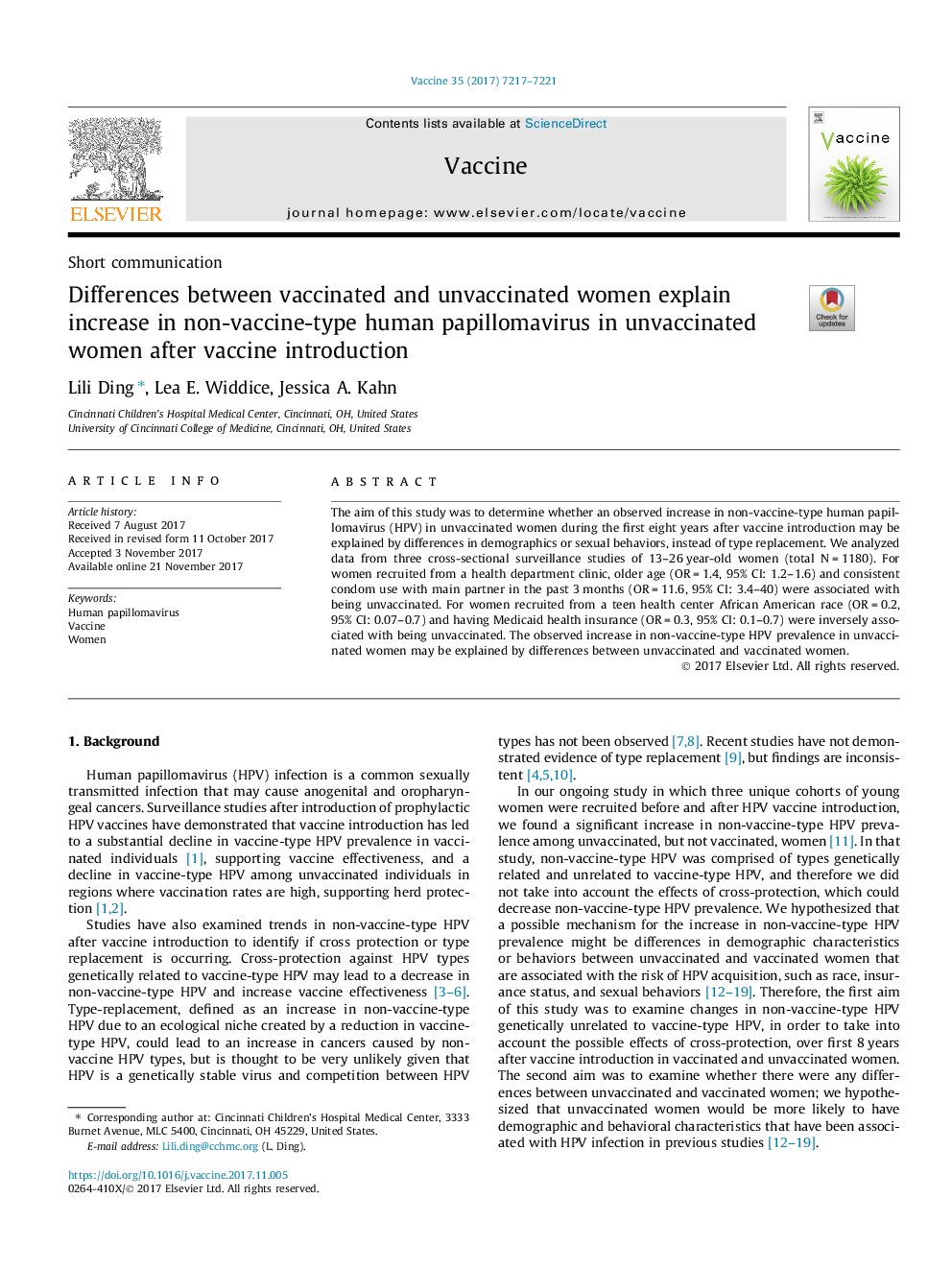| Article ID | Journal | Published Year | Pages | File Type |
|---|---|---|---|---|
| 8486350 | Vaccine | 2017 | 5 Pages |
Abstract
The aim of this study was to determine whether an observed increase in non-vaccine-type human papillomavirus (HPV) in unvaccinated women during the first eight years after vaccine introduction may be explained by differences in demographics or sexual behaviors, instead of type replacement. We analyzed data from three cross-sectional surveillance studies of 13-26â¯year-old women (total Nâ¯=â¯1180). For women recruited from a health department clinic, older age (ORâ¯=â¯1.4, 95% CI: 1.2-1.6) and consistent condom use with main partner in the past 3â¯months (ORâ¯=â¯11.6, 95% CI: 3.4-40) were associated with being unvaccinated. For women recruited from a teen health center African American race (ORâ¯=â¯0.2, 95% CI: 0.07-0.7) and having Medicaid health insurance (ORâ¯=â¯0.3, 95% CI: 0.1-0.7) were inversely associated with being unvaccinated. The observed increase in non-vaccine-type HPV prevalence in unvaccinated women may be explained by differences between unvaccinated and vaccinated women.
Keywords
Related Topics
Life Sciences
Immunology and Microbiology
Immunology
Authors
Lili Ding, Lea E. Widdice, Jessica A. Kahn,
